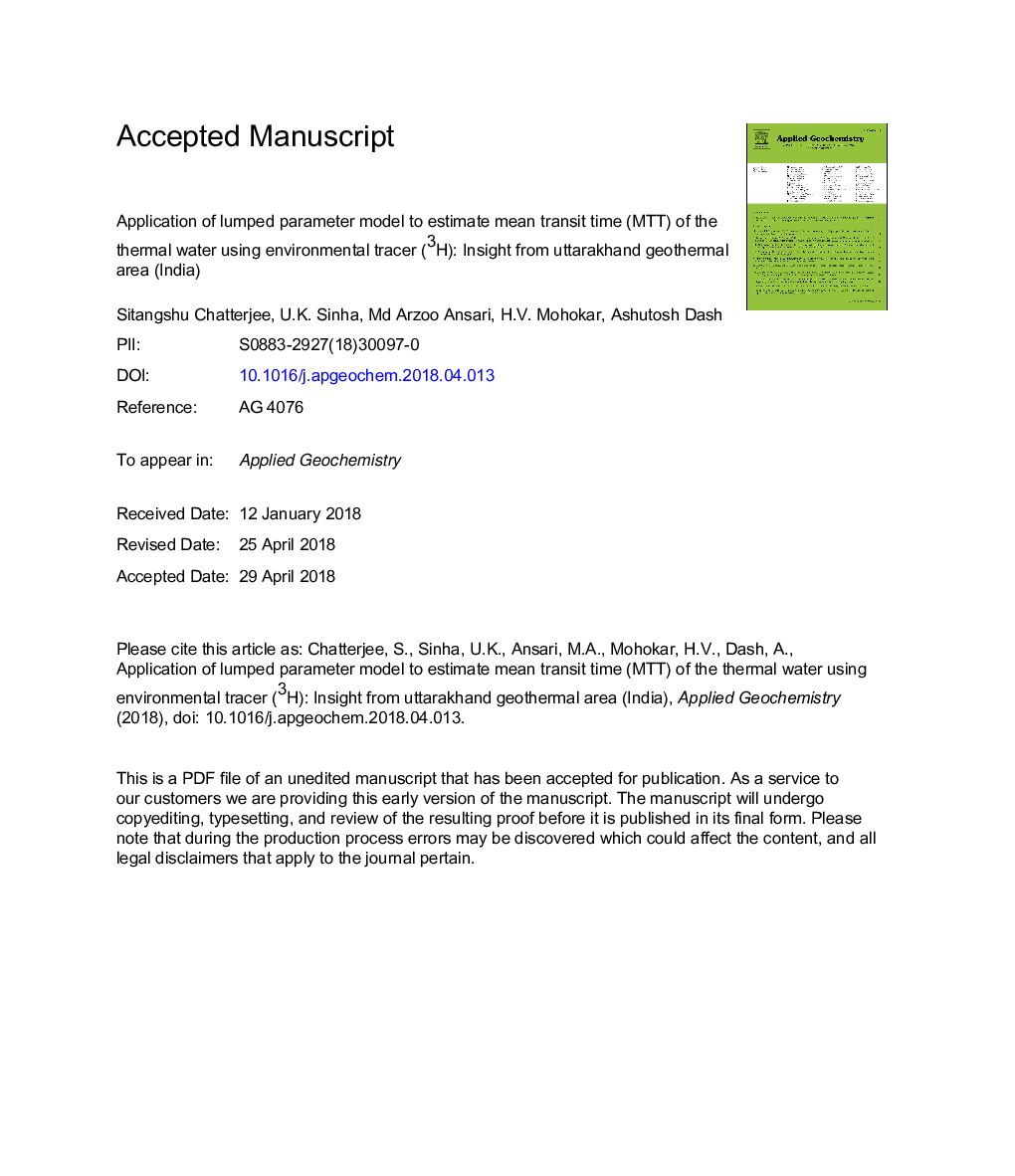| کد مقاله | کد نشریه | سال انتشار | مقاله انگلیسی | نسخه تمام متن |
|---|---|---|---|---|
| 8863087 | 1620197 | 2018 | 32 صفحه PDF | دانلود رایگان |
عنوان انگلیسی مقاله ISI
Application of lumped parameter model to estimate mean transit time (MTT) of the thermal water using environmental tracer (3H): Insight from uttarakhand geothermal area (India)
دانلود مقاله + سفارش ترجمه
دانلود مقاله ISI انگلیسی
رایگان برای ایرانیان
کلمات کلیدی
موضوعات مرتبط
مهندسی و علوم پایه
علوم زمین و سیارات
ژئوشیمی و پترولوژی
پیش نمایش صفحه اول مقاله

چکیده انگلیسی
Uttarakhand geothermal area, a part of Himalayan geothermal province, is one of the most important geothermal fields in India. Thermal springs at Tapoban and Badrinanth area are the most well studied ones among several thermal manifestations present in this area. Lumped parameter models are used in this study to calculate the mean residence time of the thermal fluids using tritium concentrations of both precipitation and thermal water. Piston flow model (PFM), exponential mixing model or well mixed model (EMM), exponential piston flow (EPM) and dispersion model (DM) are used to estimate the mean transit time (MTT) of the thermal fluids. TracerLPM (version 1), an interactive Excel® (2007 or later) workbook program, is employed to carry out this modelling procedure. Historical records of weighted mean tritium concentration of precipitation at New Delhi GNIP station (representative of the study area) acts as input concentration in modelling procedure. Missing values of tritium concentrations at New Delhi GNIP station are derived by comparing the available tritium concentration data with the tritium records at Ottawa GNIP station, Canada. Ratio between tritium values of the two GNIP stations (New Delhi and Ottawa) indicates that tritium concentration in Ottawa can be scaled by the factor of 0.41 to match with the tritium concentration at New Delhi GNIP station. Among different lumped parameter models, the simulated tritium output concentration derived from EPM and DM matches closely with the measured tritium concentration of the thermal springs. The estimated mean transit time of the Tapoban thermal water (THS) is found to be between 40 and 44 years whereas for Badrinath thermal water (BTHS) it ranges from 102 to 112 years. Both the models (EPM and DM) suggest that the aquifer feeding the Tapoban thermal water (THS) contains mixture of water flow paths i.e. combination of both exponential and piston flow, whereas aquifer feeding the Badrinanth thermal water (BTHS) mostly contains exponential mixing portion. Hydrodynamic dispersion is found to be higher in the Badrinath system compared to the Tapoban thermal water system.
ناشر
Database: Elsevier - ScienceDirect (ساینس دایرکت)
Journal: Applied Geochemistry - Volume 94, July 2018, Pages 1-10
Journal: Applied Geochemistry - Volume 94, July 2018, Pages 1-10
نویسندگان
Sitangshu Chatterjee, U.K. Sinha, Md Arzoo Ansari, H.V. Mohokar, Ashutosh Dash,